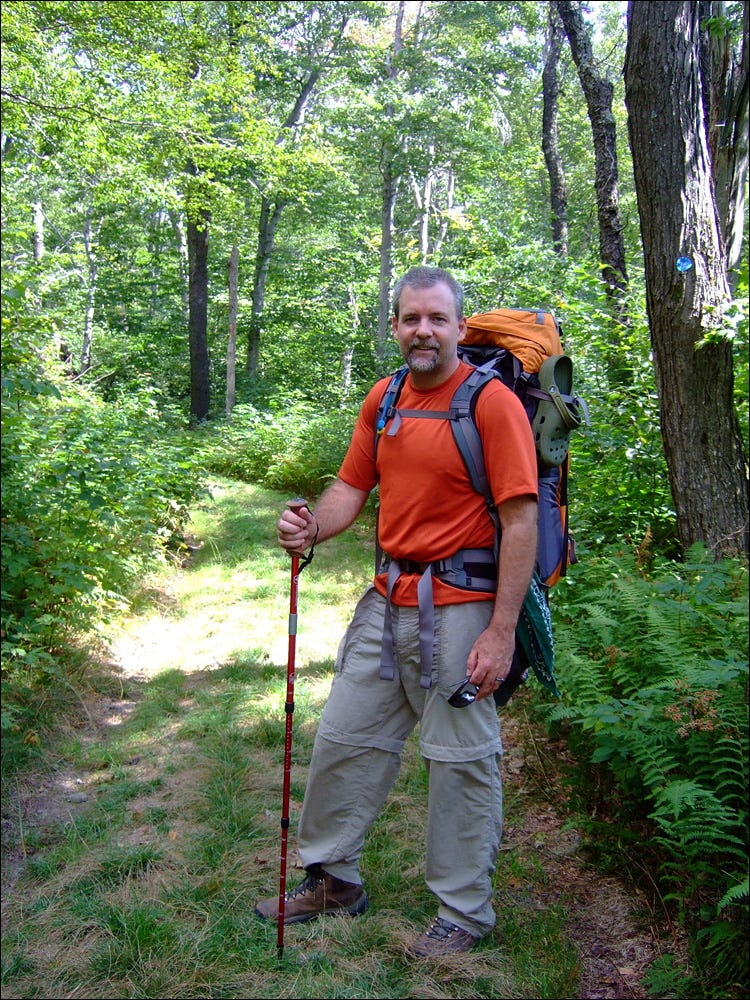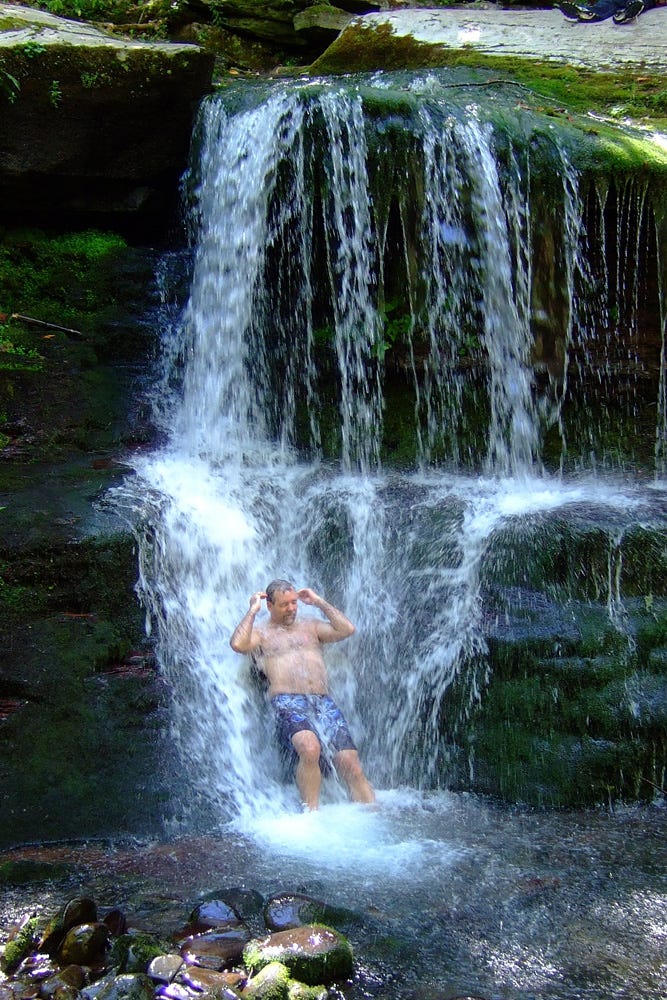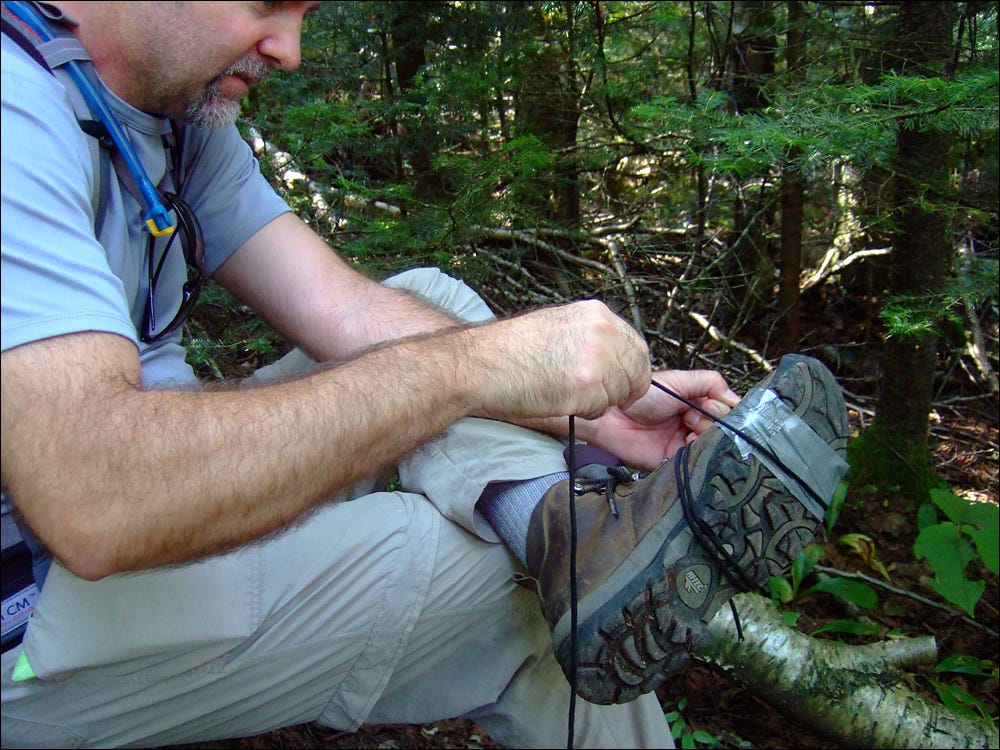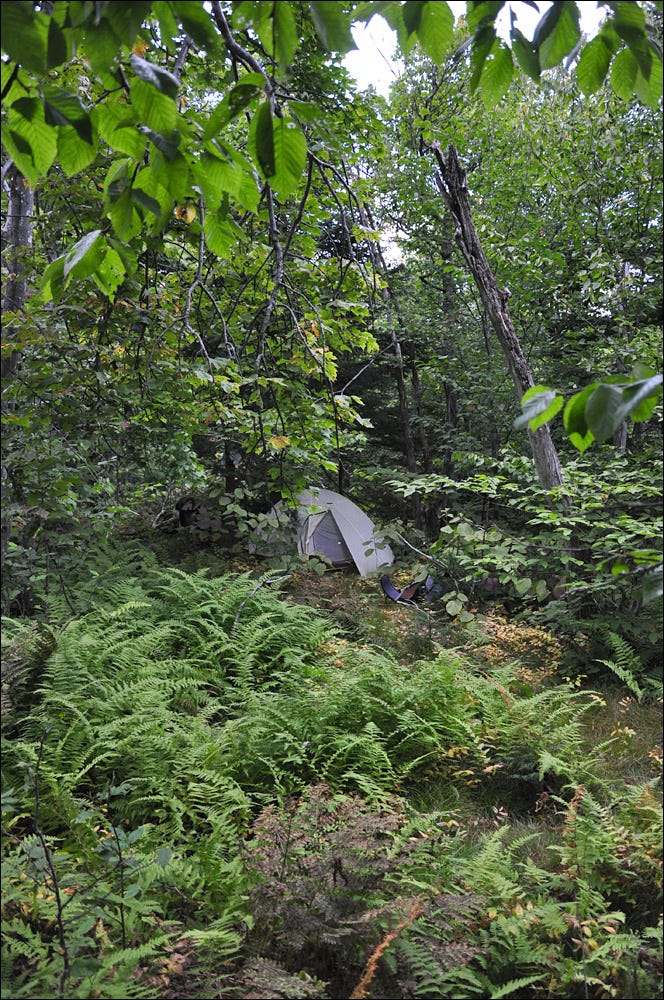From the archive: Trying out a new hobby
An account of my backpacking adventure in New York's Catskill Mountains
For the travelers and outdoor enthusiasts subscribed here for my travel-themed posts, here’s a repost of a backpacking expedition my wife and I did in the Catskills in 2009.
I've enjoyed camping as long as I can remember. Growing up, I often slept under the stars with friends in the state park behind my house. When I moved back to San Diego in 2003, I got involved with an adventure club and took frequent camping trips to destinations in southern California and Mexico. More recently, I met my wife when we pitched (separate) tents at Dutch Springs, a scuba diving park in Bethlehem, Pennsylvania.
Despite my love of the outdoors, however, my backpacking experience was almost nil. I did an overnighter to Kennedy Meadows in the Sierra Nevada range with some friends in college and hiked into Havasu Canyon with another friend in 2001, but those are the only times I'd ever camped with only what I could carry on my back. The rest had all been car camping—more convenient, but also more limiting.
So we decided to plan my first true backpacking expedition. To ease me into the new hobby, we chose a seemingly easy trail loop in the northern Catskills, planning to summit Hunter and West Kill Mountains on a three-day/two-night trip.

The first half went according to plan; Spruceton Trail, which led to Hunter's summit, was wide and grassy, with only one steep section. But for the heavy pack on my back, it almost felt like a walk in the park. On the mountaintop, we shot some photos from the fire tower and enjoyed the wide views of the surrounding mountains. On the other side of the slope, we descended and picked out a lovely camp site in the midst of a pine forest. Not a soul around us; and despite our precautions hanging our food out of reach, not a bear in the vicinity either. But for a newbie like me, it was still a tough day, and I barely had the energy to crawl into my sleeping bag at 8:00.
The next day, we continued our descent into Diamond Notch, the valley between the two peaks we planned to summit. At the bottom, the sound of rushing water lured us to Diamond Notch Falls (also known as Buttermilk Falls), a cascade under which I gladly showered. Here, we faced a dilemma. We could continue on with our plan, following Devil's Path Trail up West Kill Mountain, ending back at the road the next day—which would also mean a three-mile walk back to the car on the road. Or we could hike a short distance south on the offshoot Diamond Notch Trail, make an early camp, and then have a short and easy hike back to the car north on the same trail the next day. It was my birthday weekend, so Cassie left the decision to me; I opted for the greater challenge.
We soon learned that Devil's Path was aptly named.
If Spruceton Trail was an easy stroll, this was the opposite. Devil's Path was one of the steepest trails we'd ever hiked, and the backpacks made it that much tougher. And it kept going up. And up. And up. I referred to the map, trying to match the contour lines with the steepness of the trail to see when we'd get a break, but the ascent continued.
And then the Devil stole my soul. Or at least my sole. My boots had many miles on them before this trip, and Devil's Path proved too much for my left one. Walking up the trail, the sole caught on a rock and pulled almost all the way off. I looked down in disbelief. Was that the end of our hike? Should we turn around? No. I secured the sole with duct tape and rope, and we were on our way again.
We finally made the summit, weary and sore, rewarded with the most gorgeous view of the entire trip from Buck Ridge Lookout. But then we faced the next challenge: where to camp for the night. Regulations prohibited us from camping above 3,500 feet or within 150 feet of the trail. We originally planned to descend westward from the summit and find a suitable site below the 3,500-foot mark, filling up at a water source indicated on the map. But we soon discovered this was a good plan on paper only.
First, the "spring" shown on the map—which was also the last water source on our route—turned out to be little more than a trickle, and even that was nearly inaccessible among thick bushes. Second, the terrain was so uneven and the forest so thick that we could find no suitable site to pitch a tent—above or below 3,500 feet, within or beyond 150 feet of the trail.
As the afternoon wore on and daylight started to wane, our bushwhacking in search of a site grew more desperate. Finally, just as we started debating whether we could push all the way through to the road before it grew pitch-dark, we happened upon a secluded grove of ferns with a tiny patch of grass, where we pitched the tent under a fir tree. At that point, we would have settled on just about any clear patch of ground, but the site turned out to be quite lovely.
We had no luck with water, however, so we were forced to ration what little we had left. That meant no side dish to go with our pasta primavera, and no evening powdered "cocktail" of Crystal Light pink lemonade (Cassie) or Blue Frost Gatorade (me). Even worse, it meant no coffee the next morning—my birthday, no less. But we had enough water to get us through the last few miles of hiking, which was all that mattered. Once again, I spent my last strength crawling into the tent before it was even fully dark out.
Devil's Path was as steep on the descent as it was going up, so by the time we got to the relatively level final mile in Mink Hollow, we were ready to reach the finish line. That last mile, though, was the prettiest scenery of the entire weekend. Tall, leafy trees rose high above a bubbling stream filled with moss-covered rocks—an enchanting setting that belied the brutal miles preceding it.
All in all, it was a fantastic weekend, despite—or perhaps because of—the unexpected challenges. Cassie cautioned me against buying too much backpacking gear before the trip, in case I didn't end up enjoying it. But if the weekend was a test, I passed—and now I had a new hobby.
BONUS:




